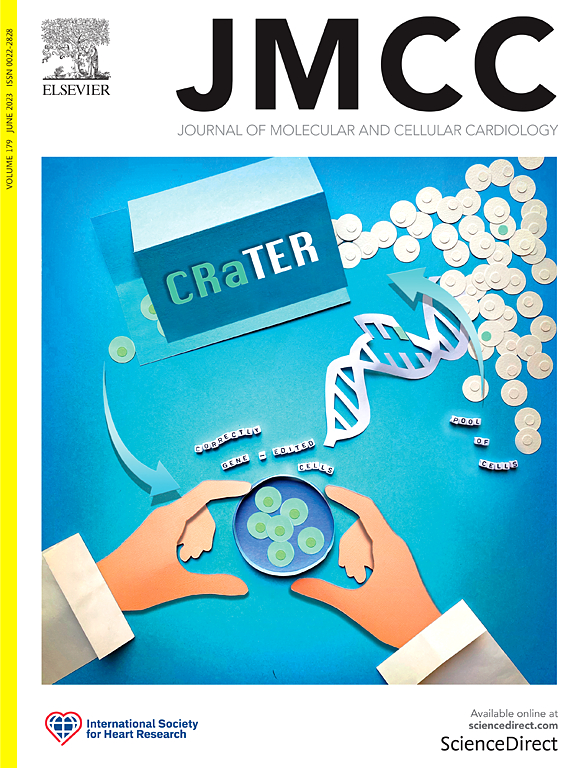14-3-3/HIP-55 complex attenuates cardiomyocyte apoptosis
IF 4.7
2区 医学
Q1 CARDIAC & CARDIOVASCULAR SYSTEMS
引用次数: 0
Abstract
Myocardial infarction (MI), a leading cause of death worldwide, results in cardiac damage mainly due to cardiomyocyte death. Early endogenous protection against cardiomyocyte death is crucial to limit infarct size and improve clinical outcomes. Previous studies have shown that 14-3-3 proteins play a vital role in cardiomyocyte survival. However, the fundamental mechanism remains unclear. Here, we revealed that 14-3-3 recruited HIP-55 forming a complex to suppress MI-induced cardiomyocyte death in response to myocardial infarction injury. The 14-3-3 partner protein-HIP-55 confers protection against MI-induced cardiomyocyte apoptosis. Mechanistically, the kinase RSK1 phosphorylates HIP-55 S269/T291 sites to promote the 14-3-3/HIP-55 complex formation which suppresses the ASK1 apoptotic pathway. Consistent with this mechanism, S269A/T291A-mutated HIP-55, which is defective in RSK1 phosphorylation and 14-3-3/HIP-55 complex formation, failed to protect against MI-induced cardiomyocyte apoptosis in vivo and in vitro. In summary, these findings demonstrate that the 14-3-3/HIP-55 complex plays a key role in cardiomyocyte survival. Targeting 14-3-3/HIP-55 may be a new therapeutic approach in the setting of acute myocardial damage.

14-3-3/HIP-55复合物减缓心肌细胞凋亡。
心肌梗死(MI)是世界范围内死亡的主要原因之一,主要由心肌细胞死亡导致心脏损伤。早期内源性心肌细胞死亡保护对限制梗死面积和改善临床结果至关重要。先前的研究表明,14-3-3蛋白在心肌细胞存活中起着至关重要的作用。然而,其基本机制尚不清楚。在这里,我们发现14-3-3招募HIP-55形成一个复合物来抑制心肌梗死损伤后心肌细胞死亡。14-3-3伴侣蛋白- hip -55对心肌细胞凋亡具有保护作用。机制上,RSK1激酶磷酸化HIP-55 S269/T291位点,促进14-3-3/HIP-55复合物的形成,从而抑制ASK1凋亡途径。与这一机制一致的是,S269A/ t291a突变的HIP-55在RSK1磷酸化和14-3-3/HIP-55复合物形成方面存在缺陷,在体内和体外均未能保护mi诱导的心肌细胞凋亡。综上所述,这些发现表明14-3-3/HIP-55复合物在心肌细胞存活中起关键作用。靶向14-3-3/HIP-55可能是治疗急性心肌损伤的新途径。
本文章由计算机程序翻译,如有差异,请以英文原文为准。
求助全文
约1分钟内获得全文
求助全文
来源期刊
CiteScore
10.70
自引率
0.00%
发文量
171
审稿时长
42 days
期刊介绍:
The Journal of Molecular and Cellular Cardiology publishes work advancing knowledge of the mechanisms responsible for both normal and diseased cardiovascular function. To this end papers are published in all relevant areas. These include (but are not limited to): structural biology; genetics; proteomics; morphology; stem cells; molecular biology; metabolism; biophysics; bioengineering; computational modeling and systems analysis; electrophysiology; pharmacology and physiology. Papers are encouraged with both basic and translational approaches. The journal is directed not only to basic scientists but also to clinical cardiologists who wish to follow the rapidly advancing frontiers of basic knowledge of the heart and circulation.

 求助内容:
求助内容: 应助结果提醒方式:
应助结果提醒方式:


